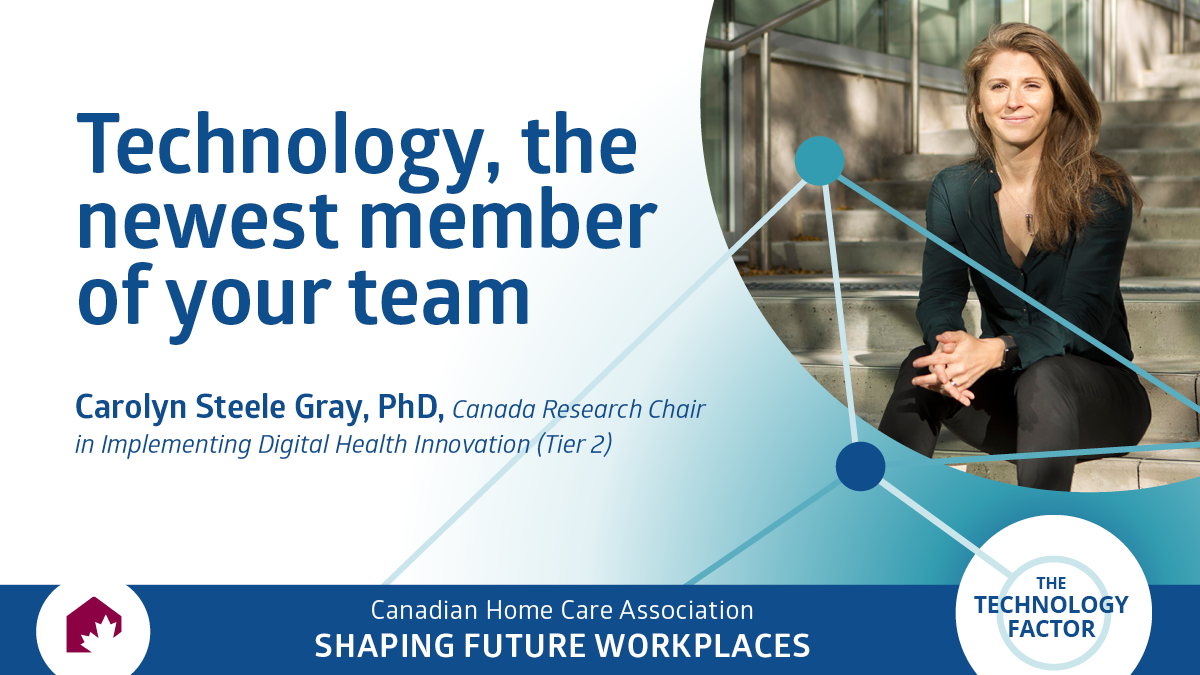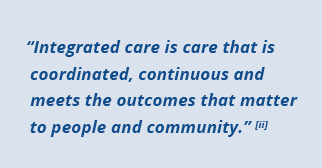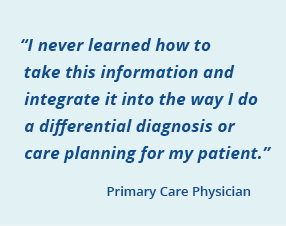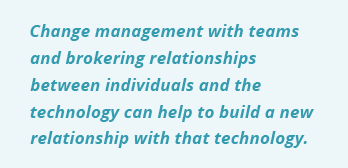Technology, the newest member of your team
Recognizing that the use of virtual health care is here to stay, health care workers need to master new ways of practicing and communicating with patients and colleagues.
The potential of technology is a key enabler to integrated care. It allows for better and real time communication and can support meaningful sharing of knowledge and decision-making between members of the health care team, including the patient and their circle of care. Digital solutions, such as remote monitoring, wearables, information communication technologies, and functional aids, along with new advancements in machine learning and artificial intelligence, can allow for more care to be provided in the community. Whether in a facility or at home, technology is not necessarily the driver but an enabler; operating seamlessly (or even invisibly) to support care delivery, communication, and collaboration. Digital solutions are effectively “the cement that holds [integrated care] together.”[i]

Clinicians have had to quickly adapt to deliver care virtually which shifts how they build and maintain relationships. The entrenched bedside manner in a room with a physical person will increasingly be replaced with remote home care. Education and skill development on remote communication and effectively relating to each other with compassion in a virtual space are essential to ensure this transformation comes along with improved patient and provider outcomes and experience. With the rapid evolution of technology, this is likely to be an ongoing program of education coupled with continuing education on how to work in an ever-changing environment.
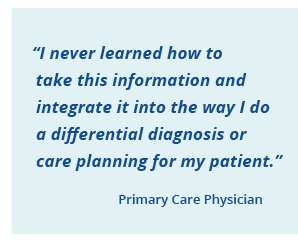
Support for clinicians to develop the skills for working within and through digital technologies is lacking across health disciplines.[iii] There is a tendency to expect users to transfer their clinical approach to the technology and to undervalue the need for new skills in academic and care settings. Research shows significant gaps across health disciplines in the preparedness for, and comfort with, digital health. [iv], [v] There are also inaccurate assumptions about age as a predictor of openness to technology.[vi] Instead, technology acceptance may be more about personality and training, with some people at any age being more reticent to adopt technology. For example, physician students in one study showed interest primarily in digital diagnostics and technology to support better communication and did not appreciate the potential of or feel adequately prepared for adopting new digital technologies.[vii],[viii],[ix]
Reticence may also be linked to a sense of mastery and identity. Technology can be the proverbial “straw that breaks…”; it can be a threat if it makes one feel inadequate or redundant or takes away what they love about their job. Change management with teams and brokering relationships between individuals and the technology can help to build a new relationship with that technology. Considering technology as one of the team members, the goal becomes making the most of that member by working it to its full scope of practice. At the end of the day, if the technology is meaningful and valuable to the person and the team, they are more willing to put the effort into using it.[x]

The opportunity to realize the sense of accomplishing well-orchestrated, effective, and comprehensive care is what motivates clinicians. If there’s no “sense-making” to the technology and no value attached to it, it may just become busy work and is de-motivating.
Breeding a learning culture and an adaptation mindset enables easier scale and spread to similar platforms. As new technologies emerge, continuing education can be nuanced to address changes in the nature of the workflow, changes in roles and responsibilities of teams and patients, and changes in how we build and maintain relationships in health care. For individuals, curiosity, adaptability, and willingness to learn, with organizations providing enabling environments may help the workforce to thrive in a future digitally enabled system.
References
[i] International Foundation for Integrated Care. Nine Pillars of Integrated Care. Retrieved Oct 31, 2022, from https://integratedcarefoundation.org/nine-pillars-of-integrated-care#1589446997093-e458b4d0-6308
[ii] Lennox-Chhugani, N. International Foundation for Integrated Care. Nine Pillars of Integrated Care. Video. Retrieved Oct 31, 2022, from https://vimeo.com/641081478
[iii] Nes A, Steindal S A, Larsen M H, Heer H C, Lærum-Onsager E, Gjevjon E R. Technological literacy in nursing education: A scoping review, Journal of Professional Nursing, Volume 37, Issue 2, 2021, Pages 320-334, ISSN 8755-7223, https://doi.org/10.1016/j.profnurs.2021.01.008.
[iv] Kleib M, Nagle LM, Furlong KE, Paul P, Wisnesky UD, Ali S. Are future nurses ready for digital health? Informatics competency baseline assessment. Nurse Educ. 2022;47(5):E98-E104. doi: 10.1097/NNE.0000000000001199
[v] Baumgartner M, Sauer C, Blagec K, Dorffner G. Digital health understanding and preparedness of medical students: a cross-sectional study. Med Educ Online. 2022 Dec;27(1):2114851. doi: 10.1080/10872981.2022.2114851. PMID: 36036219; PMCID: PMC9423824.
[vi] Tudor Car L, Kyaw B, Nannan Panday R, van der Kleij R, Chavannes N, Majeed A, Car J. Digital Health Training Programs for Medical Students: Scoping Review, JMIR Med Educ 2021;7(3):e28275 https://mededu.jmir.org/2021/3/e28275 DOI: 10.2196/28275
[vii] Baumgartner M, Sauer C, Blagec K, Dorffner G. Digital health understanding and preparedness of medical students: a cross-sectional study. Med Educ Online. 2022 Dec;27(1):2114851. doi: 10.1080/10872981.2022.2114851. PMID: 36036219; PMCID: PMC9423824.
[viii] Medicine Stanford. (2020). Stanford Medicine 2020 Health Trend Report: The Rise of Data-Driven Physician. https://med.stanford.edu/content/dam/sm/school/documents/Health-Trends Report/Stanford%20Medicine%20Health%20Trends%20Report%202020.pdf.
ix] Kleib M, Nagle LM, Furlong KE, Paul P, Wisnesky UD, Ali S. Are future nurses ready for digital health? Informatics competency baseline assessment. Nurse Educ. 2022;47(5):E98-E104. doi: 10.1097/NNE.0000000000001199
[x] Steele Gray C. Seeking Meaningful Innovation: Lessons Learned Developing, Evaluating, and Implementing the Electronic Patient-Reported Outcome Tool J Med Internet Res 2020;22(7):e17987 https://www.jmir.org/2020/7/e17987 DOI: 10.2196/17987



